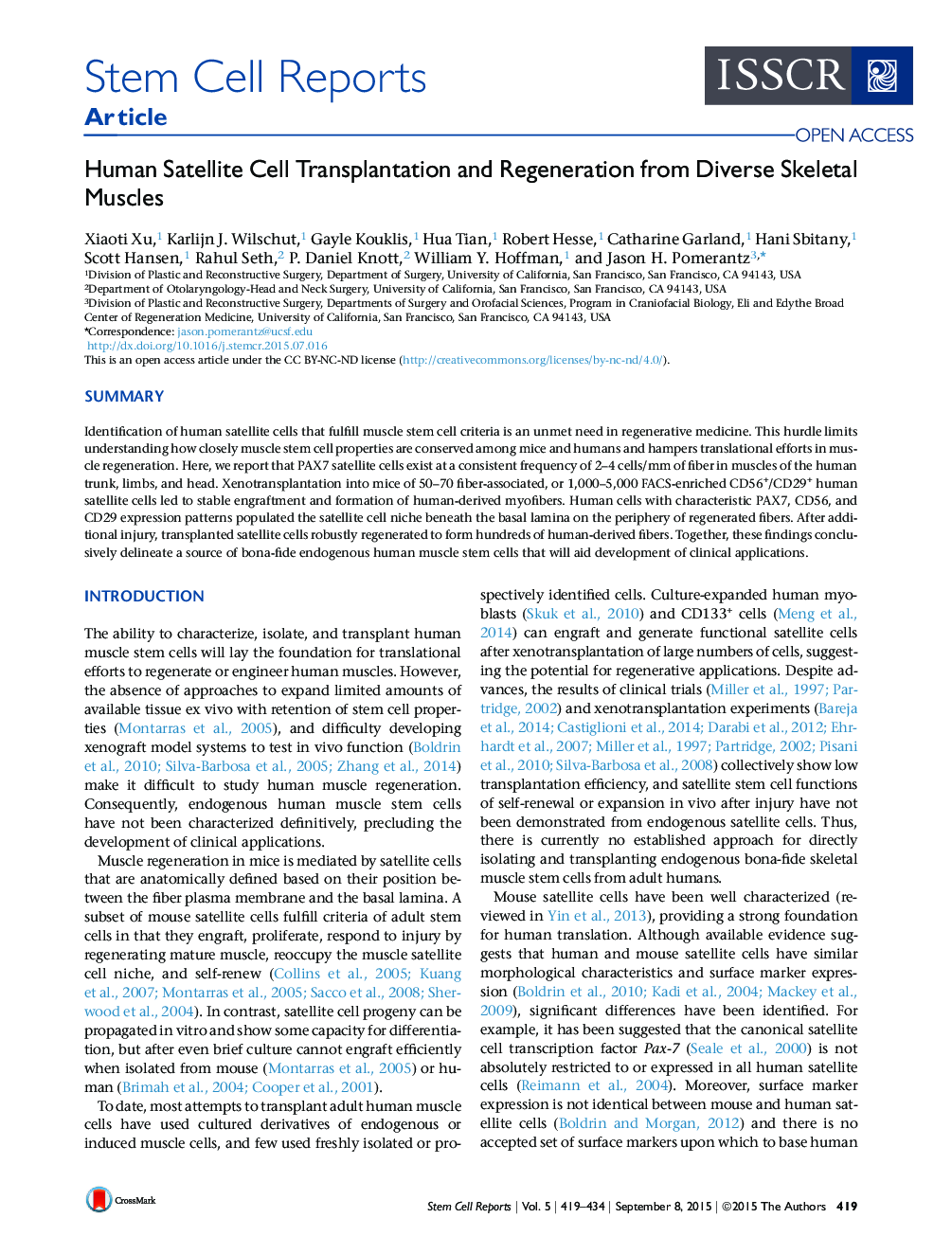| Article ID | Journal | Published Year | Pages | File Type |
|---|---|---|---|---|
| 2093409 | Stem Cell Reports | 2015 | 16 Pages |
•CD56 and CD29 mark PAX7 satellite cells in diverse human muscles•Transplanted human satellite cells engraft, self-renew, and regenerate•Human adult muscle stem cells reside within the CD56+/CD29+ satellite cell pool
SummaryIdentification of human satellite cells that fulfill muscle stem cell criteria is an unmet need in regenerative medicine. This hurdle limits understanding how closely muscle stem cell properties are conserved among mice and humans and hampers translational efforts in muscle regeneration. Here, we report that PAX7 satellite cells exist at a consistent frequency of 2–4 cells/mm of fiber in muscles of the human trunk, limbs, and head. Xenotransplantation into mice of 50–70 fiber-associated, or 1,000–5,000 FACS-enriched CD56+/CD29+ human satellite cells led to stable engraftment and formation of human-derived myofibers. Human cells with characteristic PAX7, CD56, and CD29 expression patterns populated the satellite cell niche beneath the basal lamina on the periphery of regenerated fibers. After additional injury, transplanted satellite cells robustly regenerated to form hundreds of human-derived fibers. Together, these findings conclusively delineate a source of bona-fide endogenous human muscle stem cells that will aid development of clinical applications.
